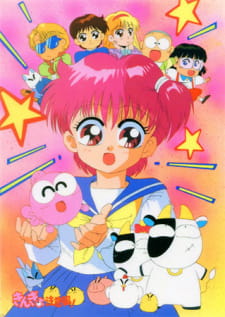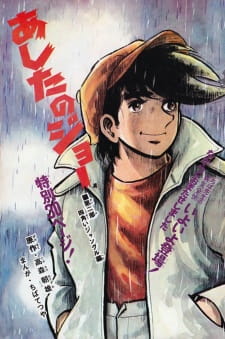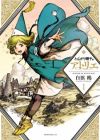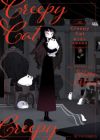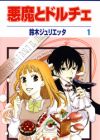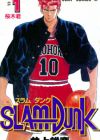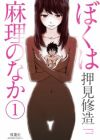History of "Shoujo" Anime
Anime
After Mahoutsukai Sally - the first animated series adapted from a manga that was targeting the "shoujo" demographic (young female audience) - there have been many more works that were targeted to this new market following the initial success of "Mahoutsukai Sally"
This list attempts to collect some of the most important of those works, starting from the beginning. This is done so that people who are interested in or new to the history of "Shoujo" anime can gain atleast some kind of understanding of the history and the development throughout the years.
I will try to write my short spoiler free review/thoughts for each of the entries on this list to explain further why I think the entry is important as far as the history of "shoujo" anime is concerned.
In short these are the series that I think everyone who is interested in shoujo anime, the history of shoujo anime or history of girls entertainment in Japan in general when it comes to animation, should be atleast aware of.
Note: The term "shoujo" used in this list is being used to refer girls entertainment in general and not just adaptations from shoujo manga.
Shoujo Anime: https://myanimelist.net/stacks/16071
Shoujo Manga: https://myanimelist.net/stacks/22135
Longest Shoujo Anime: https://myanimelist.net/stacks/26291
Classic Shoujo Manga: https://myanimelist.net/clubs.php?cid=84956
This list attempts to collect some of the most important of those works, starting from the beginning. This is done so that people who are interested in or new to the history of "Shoujo" anime can gain atleast some kind of understanding of the history and the development throughout the years.
I will try to write my short spoiler free review/thoughts for each of the entries on this list to explain further why I think the entry is important as far as the history of "shoujo" anime is concerned.
In short these are the series that I think everyone who is interested in shoujo anime, the history of shoujo anime or history of girls entertainment in Japan in general when it comes to animation, should be atleast aware of.
Note: The term "shoujo" used in this list is being used to refer girls entertainment in general and not just adaptations from shoujo manga.
Shoujo Anime: https://myanimelist.net/stacks/16071
Shoujo Manga: https://myanimelist.net/stacks/22135
Longest Shoujo Anime: https://myanimelist.net/stacks/26291
Classic Shoujo Manga: https://myanimelist.net/clubs.php?cid=84956

TV, 1966,
109 eps
Me:-
Author:10
Introduction:
Originally created by an established mangaka Yokoyama Mitsuteru (横山光輝) who is also known for popular shounen series such as "Tetsujin 28-go", "Babel II" and "Giant Robo".
Yokoyama Mitsuteru also created other "shoujo" series such as "Chibikko Tenshi" and "Cosmic Baton Girl Comet-san". It is said that the original idea for the series "Mahoutsukai Sally" was inspired by the american TV series "Bewitched".
The history of Sally manga draws its roots to a series that I mentioned earlier "Chibikko Tenshi" that many consider something of a precursor to "Sally"
Chibikko Tenshi (ちびっこ天使) serialized in shoujo magazine "Ribon" from October 1963 - June 1964. The series featured a "pair" of "angels" who were able to use magic, they came down to earth and caused all sorts of mischief with their powers.
That premise might sound familiar as its relatively similar to the premise of "Mahoutsukai Sally" that initially was serialized and called "Mahoutsukai Sunny" but the name was changed to "Sally" after a while, to avoid legal problems with Sony Corporation. The name change was referenced in one of the episodes as a joke later in the series.
Mahoutsukai Sally (魔法使いサリー) serialized in shoujo magazine "Ribon" from July 1966 - October 1967. The manga initially did not have characters who are central to the anime such as "Kabu", who was only later added to the manga as the character was so popular because of the anime. The manga does not feature characters such as "Poron", who appear in later in the anime, at all.
Review (1966):
The story of the series is simple at its core Sally coming to earth to live with the humans, however I don't think the series is necessarily about the overarching story. The story is moreso used as a vehicle to create the premise that enables setting up the characters. I'd say the important part of the story is the premise in which we learn that Sally doesn't have knowledge about the human world and comes to human world to start living in there.
The series however shines when it comes to the episodic slice of life stories based on around Sally learning about herself and the human world and what it means to be able to or to not use magic in human world. Which I think is explored in interesting ways throughout the series.
Art of the series gives off this cute and endearing vibe reminiscent of the 60s shoujo manga. I'd describe the overall visual aesthetic of the series as charming.
Voice acting in the series is pretty much the best voice acting that I've heard in any series. Especially when it comes to the main character Sally. Her voice gives off this cheeky yet endearing vibe that gives incredible amount of life into her character. Other voice actors don't fall far behind as the whole main cast gives off a really strong presence with their voices.
About the characters I'd say that this series has probably the best dynamic between characters that I've seen in any series. The dialogue and interaction between characters is joy to watch and listen with the lively voice acting coupled with visually endearing animation. It is a type of series where the characters grow on you the more you watch. More of the cast like Poron are introduced later on the series other than that the cast stays pretty much the same.
I'd say that the inclusion of Poron in the latter half of the series definitely enhanced the character dynamics of the series to a new level. As the Sally and Kabu duo dynamic didn't provide as much as it does as a trio with Poron.
Other important characters, Sally's 2 friends Sumire and Yoshiko with the triplet little brothers provide important perspective as major characters from earth. They are not aware of the magic that Sally has which I'd say adds another layer to the dynamic between the characters.
The music of the series is iconic and the theme song is one of the most recognizable and famous theme songs out there. I'd say that the music and the lyrics in the theme songs support the philosophyu and the "feminine" nature of the series drawing parallels to the main character Sally and her personality.
Overall I found the series, especially the interaction between the characters and the handling of the concept of magic very enjoyable on the series. I'd go as far that I say that the series has the best interpretation and starting point when it comes to exploring magic that I've seen when it comes to anime. When you combine that with the likable, charming and endearing overall vibe of the characters themselves and the design, you get something special.
Review (1989):
The sequel/reboot series can technically be watched without seeing the original series however I'd say that you would be doing yourself a disservice as the original series is in many ways better than the "remake".
Firstly the most noticeable difference is the art, the original series had the 60s art and animation where the movement was emphasised at points. This series on the other hand shares the 80s darker visual atmosphere with softer character design and overall strokes are smoother. I'd say that the darker visual atmosphere is visually better looking though the characters have different emphasis when compared to original. I wouldn't call that bad or good necessarily its just different.
Now the voice acting definitely is not as good as it was in the original Sally in particular feeling lot more soft and matured as far as her voice is concerned, the cheeky vibe is also toned down and her voice has this kind vibe instead. I enjoyed the og interpretation of her character more personally but the new one is not bad necessarily it's just different. Same kind of changes can be observed from other characters too though those changes didn't impact me as much.
It is not just the voice that was toned down feels like Sally as a character was kinda toned down, her magic was not as all powerful as in og some new rules were introduced in this series which I think made the concept of magic that was interesting in the original series not as interesting in this series. Though overall I'd say that it didn't impact my enjoyment much as the interaction between characters and the character dynamics that made the original series one of my favorites didn't change that much considering that Sally and some others felt bit toned down.
Another character that was changed somewhat significantly was Poron, who was introduced in the second half of the original series. In this version Poron acts much more like a baby and isn't the mischievous kind of child she was in the original series. Also her voice actor in the newer series doesn't present her sassy character and nature well at all.
The reboot series featured a new performance of the iconic theme song from the original series, however the approach in this series was more gentle when it comes to the performance when compared to the original series where the music had kind of a "sassy" vibe. This more gentle approach is in line with the changes made to Sally as a character, so I'd say that the portrayal fits the series and the character really well.
Overall ompared to the original series I'd say that it is visually impressive series with great visual atmosphere doing those aspects arguably better than the original, but falling bit short on some other areas.
Thoughts:
The series, as being the first anime aimed directly to the "shoujo" demographic I'd say is one of the most important if not the most important series on this list.
Originally created by an established mangaka Yokoyama Mitsuteru (横山光輝) who is also known for popular shounen series such as "Tetsujin 28-go", "Babel II" and "Giant Robo".
Yokoyama Mitsuteru also created other "shoujo" series such as "Chibikko Tenshi" and "Cosmic Baton Girl Comet-san". It is said that the original idea for the series "Mahoutsukai Sally" was inspired by the american TV series "Bewitched".
The history of Sally manga draws its roots to a series that I mentioned earlier "Chibikko Tenshi" that many consider something of a precursor to "Sally"
Chibikko Tenshi (ちびっこ天使) serialized in shoujo magazine "Ribon" from October 1963 - June 1964. The series featured a "pair" of "angels" who were able to use magic, they came down to earth and caused all sorts of mischief with their powers.
That premise might sound familiar as its relatively similar to the premise of "Mahoutsukai Sally" that initially was serialized and called "Mahoutsukai Sunny" but the name was changed to "Sally" after a while, to avoid legal problems with Sony Corporation. The name change was referenced in one of the episodes as a joke later in the series.
Mahoutsukai Sally (魔法使いサリー) serialized in shoujo magazine "Ribon" from July 1966 - October 1967. The manga initially did not have characters who are central to the anime such as "Kabu", who was only later added to the manga as the character was so popular because of the anime. The manga does not feature characters such as "Poron", who appear in later in the anime, at all.
Review (1966):
The story of the series is simple at its core Sally coming to earth to live with the humans, however I don't think the series is necessarily about the overarching story. The story is moreso used as a vehicle to create the premise that enables setting up the characters. I'd say the important part of the story is the premise in which we learn that Sally doesn't have knowledge about the human world and comes to human world to start living in there.
The series however shines when it comes to the episodic slice of life stories based on around Sally learning about herself and the human world and what it means to be able to or to not use magic in human world. Which I think is explored in interesting ways throughout the series.
Art of the series gives off this cute and endearing vibe reminiscent of the 60s shoujo manga. I'd describe the overall visual aesthetic of the series as charming.
Voice acting in the series is pretty much the best voice acting that I've heard in any series. Especially when it comes to the main character Sally. Her voice gives off this cheeky yet endearing vibe that gives incredible amount of life into her character. Other voice actors don't fall far behind as the whole main cast gives off a really strong presence with their voices.
About the characters I'd say that this series has probably the best dynamic between characters that I've seen in any series. The dialogue and interaction between characters is joy to watch and listen with the lively voice acting coupled with visually endearing animation. It is a type of series where the characters grow on you the more you watch. More of the cast like Poron are introduced later on the series other than that the cast stays pretty much the same.
I'd say that the inclusion of Poron in the latter half of the series definitely enhanced the character dynamics of the series to a new level. As the Sally and Kabu duo dynamic didn't provide as much as it does as a trio with Poron.
Other important characters, Sally's 2 friends Sumire and Yoshiko with the triplet little brothers provide important perspective as major characters from earth. They are not aware of the magic that Sally has which I'd say adds another layer to the dynamic between the characters.
The music of the series is iconic and the theme song is one of the most recognizable and famous theme songs out there. I'd say that the music and the lyrics in the theme songs support the philosophyu and the "feminine" nature of the series drawing parallels to the main character Sally and her personality.
Overall I found the series, especially the interaction between the characters and the handling of the concept of magic very enjoyable on the series. I'd go as far that I say that the series has the best interpretation and starting point when it comes to exploring magic that I've seen when it comes to anime. When you combine that with the likable, charming and endearing overall vibe of the characters themselves and the design, you get something special.
Review (1989):
The sequel/reboot series can technically be watched without seeing the original series however I'd say that you would be doing yourself a disservice as the original series is in many ways better than the "remake".
Firstly the most noticeable difference is the art, the original series had the 60s art and animation where the movement was emphasised at points. This series on the other hand shares the 80s darker visual atmosphere with softer character design and overall strokes are smoother. I'd say that the darker visual atmosphere is visually better looking though the characters have different emphasis when compared to original. I wouldn't call that bad or good necessarily its just different.
Now the voice acting definitely is not as good as it was in the original Sally in particular feeling lot more soft and matured as far as her voice is concerned, the cheeky vibe is also toned down and her voice has this kind vibe instead. I enjoyed the og interpretation of her character more personally but the new one is not bad necessarily it's just different. Same kind of changes can be observed from other characters too though those changes didn't impact me as much.
It is not just the voice that was toned down feels like Sally as a character was kinda toned down, her magic was not as all powerful as in og some new rules were introduced in this series which I think made the concept of magic that was interesting in the original series not as interesting in this series. Though overall I'd say that it didn't impact my enjoyment much as the interaction between characters and the character dynamics that made the original series one of my favorites didn't change that much considering that Sally and some others felt bit toned down.
Another character that was changed somewhat significantly was Poron, who was introduced in the second half of the original series. In this version Poron acts much more like a baby and isn't the mischievous kind of child she was in the original series. Also her voice actor in the newer series doesn't present her sassy character and nature well at all.
The reboot series featured a new performance of the iconic theme song from the original series, however the approach in this series was more gentle when it comes to the performance when compared to the original series where the music had kind of a "sassy" vibe. This more gentle approach is in line with the changes made to Sally as a character, so I'd say that the portrayal fits the series and the character really well.
Overall ompared to the original series I'd say that it is visually impressive series with great visual atmosphere doing those aspects arguably better than the original, but falling bit short on some other areas.
Thoughts:
The series, as being the first anime aimed directly to the "shoujo" demographic I'd say is one of the most important if not the most important series on this list.
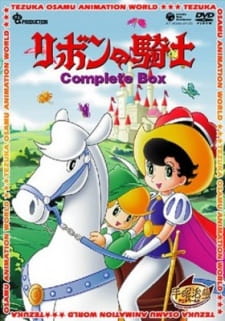
TV, 1967,
52 eps
Me:-
Author:10
Introduction:
Based on a manga by Tezuka Osamu "The God of Manga", who doesn't really need introduction- He also did a number of other shoujo manga but as far as the animated works go I'd say that this work is the most significant one.
The first version of the manga ran in "Shoujo Club" in 1953 - 1956, however Tezuka did another version of the manga that was published in "Nakayoshi" in 1963 - 1966.
Review:
The series explores the character "Sapphire" and through her character the complex theme of gender dynamics is also explored. The character is initially portrayed as living in a setting that challenges her gender and and because of that challenge, you could say that it creates an internal conflict within the character.
The series mainly focuses on this conflict and emphasizes the "strenght" of the character and "self discovery".
Based on a manga by Tezuka Osamu "The God of Manga", who doesn't really need introduction- He also did a number of other shoujo manga but as far as the animated works go I'd say that this work is the most significant one.
The first version of the manga ran in "Shoujo Club" in 1953 - 1956, however Tezuka did another version of the manga that was published in "Nakayoshi" in 1963 - 1966.
Review:
The series explores the character "Sapphire" and through her character the complex theme of gender dynamics is also explored. The character is initially portrayed as living in a setting that challenges her gender and and because of that challenge, you could say that it creates an internal conflict within the character.
The series mainly focuses on this conflict and emphasizes the "strenght" of the character and "self discovery".

TV, 1969,
94 eps
Me:-
Author:10
Introduction:
Originally created by Fujio Akatsuka, who is probably better known from works such as "Osomatsu" and "Tensai Bakabon".
The series follows "Kagami Atsuko" who is a normal girl, who suddenly gains a magical power through an item - a compact mirror. This was one of the first cases where an item was linked to the heroine and thus allowed merchandising and sale of products related to the heroine.
Sally didn't have any items or wands in the original series, in the reboot series many items were added.
Review (1969):
Himitsu no Akko-chan as a series brings the theme of "magic" closer to the reach of the "normal girls" as by its premise the setting can be seen as more relateble to the audience than the other early parts of the "Majokko Series"
The story of the series is about Akko who gains the ability to transform to anything that she wants to with the help of a magical mirror (item). This premise allows pretty interesting way of exploring the characters and the dynamics as, Akko can "act" as other characters on their behalf.
Another important part of the series is the fact that Akko keeps this power a secret from everyone, this sets up a setting where you can see her "acting" as a "sectret" "hero of justice" type of thing.
Primarly the series focuses on character relations and Akko learns throughout the series how to appreciate her relationships and friends with and without of using magic. The overall tone of the series is very endearing and charming.
The side characters and their character types featured in the series can be seen as "caricatures" of popular tropes at the time, the main character AKko however carries the series pretty much on her own I'd say.
The series follows Kagami Atsuko (Akko) who at the start of the series had buried a mirror after it broke and is presented a magical mirror from heavens as a present for her kind gesture towards the old mirror. This mirror holds a very special power that allows Akko to transform into anything that she wills by chanting a magical phrase "Tekumaku Mayakon". The exploration in the series is focused mainly on this power and how Akko utilises this power to help her friends and relationships while also exploring these relationships in depth and from different perspectives utilising this power.
The series also poses an interesting approach to the characters and the morality of Akko posing as these different characters to escalate or fix these situations. The power is also used to drive home the comedic presence of these characters and escalate the situations to highlight the comedic aspect of the series. The relationships and their importance around Akko is also highlighted through the usage of the transformation power that Akko utilises in the series.
When it comes to the characters Akko herself is obviously on the focus when it comes to the series. The surrounding characters are mainly presented as "caricatures" and serve as a contrast to Akko and the power, the surrounding characters also highlight and escalate the comedy and other situations that arise from Akko utlising the power.
The art style of the series draws parallels to the earlier series "Mahoutsukai Sally" and I'd say utilises similar approach when it comes to the design and visaul aspects of the series. The character design also draws parallels to the iconic designs from the original manga. Blending these two aspects into a very wholesome look and feel when it comes to the visuals.
The sound and voice acting is one of the highlights of the series as was the case in "Mahoutsukai Sally" the characters personaly is enhanced to a new level through the brilliant voice acting in the series and the soundtrack doesnt leave anyone cold with the iconic theme song and many other tracks enhancing the engagement and immersion to the emotion presented in the series.
Overall the series is a timeless classic that presents an interesting approach to the morality of posing as others and the responsibility when it comes to utilising a power. This all is presented in a wholesome and kind manner leaving a smile to your face
Review (1988):
The reboot series that ended the "break" that Toei had from making magical themed series in the 1980s, the art and visual design has improved look and the remaster is spearheaded by no other than the "Queen of Anime Music" and one of the "faces" of the earleir parts of the "Majokko Series" Mitsuko Horie.
Mitsuko Horie sings the theme songs for the series and also is the voice for Akko. I'd say that her performance is on par with the original series and the original voice acting performance in the original series that I would say was one of its strengths.
In the second series Akko is present as a more dynamic both visually and in how I see her philosophy presented in the series. The relationships are also structured that presents more of the character itself in the series rather than the "caricature" than how it was presented in the older series.
This i'd say adds more depth to the dynamics between characters as opposed to the original series where the maing character Akko was essentially carrying the presentation and the other characters served as tools to highlight that presentation.
The remake however still presents the familair caricatures from the older series except this time they dont need Akko around them to establish themselves. While the individualism of the characters improved from the older series the presentation still relies heavily on the main character and how she presents herself in the series.
Review (1998):
The second reboot is not visually as good, and the series overall feels like a downgrade from the two earleir parts, I'd recommend it only if you're a diehard fan of Akko, Akatsuka or the "Magical Girl" genre.
The individuality of the characters was reduced back to the "caricature" approach except this time Also Akko herself was also reduced essentially leaving the series without a main "driving force"
The missing drive is evident in the series from the get go and the visual presentation itself doesnt really compensate for the lack of "drive" in the dynamic that manages the flow of the series.
I personally dont think that the visual approach in the second reboot represents the philosohpy that was explored in the two of the older series. On its own the series manages to present its own philosophy however it isnt necessarily linked to the two previous iterations as I se it.
Originally created by Fujio Akatsuka, who is probably better known from works such as "Osomatsu" and "Tensai Bakabon".
The series follows "Kagami Atsuko" who is a normal girl, who suddenly gains a magical power through an item - a compact mirror. This was one of the first cases where an item was linked to the heroine and thus allowed merchandising and sale of products related to the heroine.
Sally didn't have any items or wands in the original series, in the reboot series many items were added.
Review (1969):
Himitsu no Akko-chan as a series brings the theme of "magic" closer to the reach of the "normal girls" as by its premise the setting can be seen as more relateble to the audience than the other early parts of the "Majokko Series"
The story of the series is about Akko who gains the ability to transform to anything that she wants to with the help of a magical mirror (item). This premise allows pretty interesting way of exploring the characters and the dynamics as, Akko can "act" as other characters on their behalf.
Another important part of the series is the fact that Akko keeps this power a secret from everyone, this sets up a setting where you can see her "acting" as a "sectret" "hero of justice" type of thing.
Primarly the series focuses on character relations and Akko learns throughout the series how to appreciate her relationships and friends with and without of using magic. The overall tone of the series is very endearing and charming.
The side characters and their character types featured in the series can be seen as "caricatures" of popular tropes at the time, the main character AKko however carries the series pretty much on her own I'd say.
The series follows Kagami Atsuko (Akko) who at the start of the series had buried a mirror after it broke and is presented a magical mirror from heavens as a present for her kind gesture towards the old mirror. This mirror holds a very special power that allows Akko to transform into anything that she wills by chanting a magical phrase "Tekumaku Mayakon". The exploration in the series is focused mainly on this power and how Akko utilises this power to help her friends and relationships while also exploring these relationships in depth and from different perspectives utilising this power.
The series also poses an interesting approach to the characters and the morality of Akko posing as these different characters to escalate or fix these situations. The power is also used to drive home the comedic presence of these characters and escalate the situations to highlight the comedic aspect of the series. The relationships and their importance around Akko is also highlighted through the usage of the transformation power that Akko utilises in the series.
When it comes to the characters Akko herself is obviously on the focus when it comes to the series. The surrounding characters are mainly presented as "caricatures" and serve as a contrast to Akko and the power, the surrounding characters also highlight and escalate the comedy and other situations that arise from Akko utlising the power.
The art style of the series draws parallels to the earlier series "Mahoutsukai Sally" and I'd say utilises similar approach when it comes to the design and visaul aspects of the series. The character design also draws parallels to the iconic designs from the original manga. Blending these two aspects into a very wholesome look and feel when it comes to the visuals.
The sound and voice acting is one of the highlights of the series as was the case in "Mahoutsukai Sally" the characters personaly is enhanced to a new level through the brilliant voice acting in the series and the soundtrack doesnt leave anyone cold with the iconic theme song and many other tracks enhancing the engagement and immersion to the emotion presented in the series.
Overall the series is a timeless classic that presents an interesting approach to the morality of posing as others and the responsibility when it comes to utilising a power. This all is presented in a wholesome and kind manner leaving a smile to your face
Review (1988):
The reboot series that ended the "break" that Toei had from making magical themed series in the 1980s, the art and visual design has improved look and the remaster is spearheaded by no other than the "Queen of Anime Music" and one of the "faces" of the earleir parts of the "Majokko Series" Mitsuko Horie.
Mitsuko Horie sings the theme songs for the series and also is the voice for Akko. I'd say that her performance is on par with the original series and the original voice acting performance in the original series that I would say was one of its strengths.
In the second series Akko is present as a more dynamic both visually and in how I see her philosophy presented in the series. The relationships are also structured that presents more of the character itself in the series rather than the "caricature" than how it was presented in the older series.
This i'd say adds more depth to the dynamics between characters as opposed to the original series where the maing character Akko was essentially carrying the presentation and the other characters served as tools to highlight that presentation.
The remake however still presents the familair caricatures from the older series except this time they dont need Akko around them to establish themselves. While the individualism of the characters improved from the older series the presentation still relies heavily on the main character and how she presents herself in the series.
Review (1998):
The second reboot is not visually as good, and the series overall feels like a downgrade from the two earleir parts, I'd recommend it only if you're a diehard fan of Akko, Akatsuka or the "Magical Girl" genre.
The individuality of the characters was reduced back to the "caricature" approach except this time Also Akko herself was also reduced essentially leaving the series without a main "driving force"
The missing drive is evident in the series from the get go and the visual presentation itself doesnt really compensate for the lack of "drive" in the dynamic that manages the flow of the series.
I personally dont think that the visual approach in the second reboot represents the philosohpy that was explored in the two of the older series. On its own the series manages to present its own philosophy however it isnt necessarily linked to the two previous iterations as I se it.
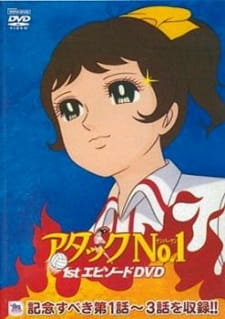
TV, 1969,
104 eps
Me:-
Author:10
Introduction:
Original manga created by Urano Chikako, known for her signature style and character design, lot of her shoujo works revolved around sports and "passion".
A coming of age sports "epic" that took everyone by storm, there was sort of a sports "craze" in late 1960s and early 1970s and "Attack No 1" came kinda just in time for the "party" and was very successful.
The series follows young Ayuhara Kozue who picks up the sport of volleyball and follows her struggle with her relationship and teammates through her "youth" that is filled with "drama" and "passion".
Review:
The story covers the "youth", "growth" and "struggle" of Kozue as she learns what it means to play volleyball as an individual and as part of a team. Kozue will also learn about relationships and how they play a role when it comes to the sport and her life outside of the sport.
The art is one of the strengths of the series as the girls emotion and struggle is visually portrayed in very good fashion reminiscent of the 60s shoujo manga design style which I think emphasises the emotion and visual identity of the characters. One of the most clever visual metaphors used throughout the series is the sparkles in the eyes of the characters decipting the rivalry and tense moments of struggle of the characters. Which I think adds significant amount of visual personality to the design of the series.
The voice acting is also really good, portraying the raw emotion and struggle of the characters in precise and dramatic manner which I think enhances the overall enjoyment of the series.
Now one of the most iconic characters in the series "the coach" I think his role enhances the series to another level as the contrast and role that he plays in the life of the girls and Kozue herself is somthing special.
Original manga created by Urano Chikako, known for her signature style and character design, lot of her shoujo works revolved around sports and "passion".
A coming of age sports "epic" that took everyone by storm, there was sort of a sports "craze" in late 1960s and early 1970s and "Attack No 1" came kinda just in time for the "party" and was very successful.
The series follows young Ayuhara Kozue who picks up the sport of volleyball and follows her struggle with her relationship and teammates through her "youth" that is filled with "drama" and "passion".
Review:
The story covers the "youth", "growth" and "struggle" of Kozue as she learns what it means to play volleyball as an individual and as part of a team. Kozue will also learn about relationships and how they play a role when it comes to the sport and her life outside of the sport.
The art is one of the strengths of the series as the girls emotion and struggle is visually portrayed in very good fashion reminiscent of the 60s shoujo manga design style which I think emphasises the emotion and visual identity of the characters. One of the most clever visual metaphors used throughout the series is the sparkles in the eyes of the characters decipting the rivalry and tense moments of struggle of the characters. Which I think adds significant amount of visual personality to the design of the series.
The voice acting is also really good, portraying the raw emotion and struggle of the characters in precise and dramatic manner which I think enhances the overall enjoyment of the series.
Now one of the most iconic characters in the series "the coach" I think his role enhances the series to another level as the contrast and role that he plays in the life of the girls and Kozue herself is somthing special.

TV, 1970,
48 eps
Me:-
Author:10
Introduction:
First "original" series that was targeting the young female demographic. The series was created to continue the "Toei Majokko" series that had already established its popularity among the demographic with previous titles "Sally" and "Akko".
The series is loosely based on the famous fairy tale "Little Mermaid" and it follows Mako who is "Mermaid Princess" and starts living with humans due to one fateful "encounter" with an individual.
Toei reportedly wanted to re-attract the same now older audience and popularity who grew up with Sally with this work and as such the series handles some surprisingly serious topics at times, including racism and discrmination. The tone in the earlier two series in the "Toei Majokko" series was more in line with the "youth" without much of the "seriousness" so to speak.
Review:
Mako is similar to Sally in the terms of its premise however the series takes a more "mature" approach to the similar themes that were explored more softly in the earlier series.
The series feature mainly themes relating to "family" and "identity" as an individual. The series provided also a good starting point for the original works in the "Toei Majokko" series.
First "original" series that was targeting the young female demographic. The series was created to continue the "Toei Majokko" series that had already established its popularity among the demographic with previous titles "Sally" and "Akko".
The series is loosely based on the famous fairy tale "Little Mermaid" and it follows Mako who is "Mermaid Princess" and starts living with humans due to one fateful "encounter" with an individual.
Toei reportedly wanted to re-attract the same now older audience and popularity who grew up with Sally with this work and as such the series handles some surprisingly serious topics at times, including racism and discrmination. The tone in the earlier two series in the "Toei Majokko" series was more in line with the "youth" without much of the "seriousness" so to speak.
Review:
Mako is similar to Sally in the terms of its premise however the series takes a more "mature" approach to the similar themes that were explored more softly in the earlier series.
The series feature mainly themes relating to "family" and "identity" as an individual. The series provided also a good starting point for the original works in the "Toei Majokko" series.
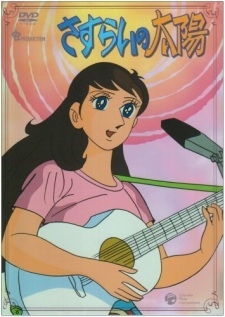
TV, 1971,
26 eps
Me:-
Author:10
Introduction:
Manga by Suzuki Mayumi
An acclaimed drama series, that follows the "passionate" and fated struggle of Mine Nozomi and tackles many interesting topics.
Review:
The series follows the struggle of Mine Nozomi who has to fight against "the odds" to reach her dream.
Manga by Suzuki Mayumi
An acclaimed drama series, that follows the "passionate" and fated struggle of Mine Nozomi and tackles many interesting topics.
Review:
The series follows the struggle of Mine Nozomi who has to fight against "the odds" to reach her dream.
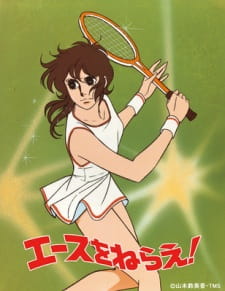
TV, 1973,
26 eps
Me:-
Author:10
Introduction:
Sports series were popular in early 1970s and "Ace wo Nerae" stands out among those series, due to the immense emotion, struggle and realistic approach to both the sport and the relationships around the character and the sport.
The original series marked the first time that the legendary director "Osamu Dezaki" worked with a "shoujo" series. You could say that the success of the series is partly due to his genius, but I'd say that his contribution only further enhanced and realized the immense potential and depth that the series had.
The manga was created by Yamamoto Sumika (山本鈴美香) and it is the best known work from her works. The manga ran in the shoujo magazine "Margaret" from 1973 to 1980.
The series follows Oka Hiromi who wants to play tennis, but quickly learns that the sport and the relationships around the sport are not to be underestimated.
Review 1970s:
The series, by its visuals is very stylistic and emphasizes "visual metaphors" the series also emphasizes the character design and the struggle of the characters through that design and the metaphors.
The visual atmosphere of the series in 1970s provided a "youthful" more innocent approach to the setting and characters with many bright visual metaphors and design patterns used via repetition and similar gimmicks as to evoke emotion related to the "youthfulness" of the presentation.
In the early parts of the series Oka Hiromi learns the struggle of relationships and the sport and what it means to be "passionate" she also learn the value of herself and makes progress in discovering the value that lies in the heart of the relationships around her.
Review 1980s:
The story continues mainly from where the original series left off. I'd say that the engaging part of the series for me is the exploration of the struggle of the main character and the story is more so used to lay out a premise for that exploration.
The art style of the series is different from the prequels which had more bright and youthful perspective to the design and colors. The palette for this series is lot darker and portrays more mature and darker approach to the series. I'd say that the design and colors are in line with the main characters mindset compared to the earlier series. The vibe of the design is also very "Dezaki" looking at Oniisama e... and Black Jack OVA.
I'd say that part of the philosophy of this sequel series is growing up from an innocent childhood to accepting the reality around you and overcoming the struggle. The art and design I'd say represent this philosophy when compared to the original 1973, 1978 and 1979 more youthful parts of the story.
The key character during this season is Oka Hiromi the main character and her relationships with tennis, her friends and the coach Munakata Jin. I'd say that these relationships and how their weight reflects on the main character and her struggle is handled exceptionally well in this series.
Another key part of the series is the Oka Hiromi growing up through her struggle and moving on towards the future accepting herself and her relationships.
As far as enjoyment goes this series is probably the series that I was most engaged in to watching just because of how well the struggle of the character and her growth during the series was handled. If you are not fan of heavy struggle or dramatised portrayal of growth you might not enjoy this parth as much.
Overall I'd say that it is essential that both the 1970s and the 1980s experiences are experienced in a successive fashion to be able to gain an understanding of the full picture when it comes to this sports/coming of age "epic"
Sports series were popular in early 1970s and "Ace wo Nerae" stands out among those series, due to the immense emotion, struggle and realistic approach to both the sport and the relationships around the character and the sport.
The original series marked the first time that the legendary director "Osamu Dezaki" worked with a "shoujo" series. You could say that the success of the series is partly due to his genius, but I'd say that his contribution only further enhanced and realized the immense potential and depth that the series had.
The manga was created by Yamamoto Sumika (山本鈴美香) and it is the best known work from her works. The manga ran in the shoujo magazine "Margaret" from 1973 to 1980.
The series follows Oka Hiromi who wants to play tennis, but quickly learns that the sport and the relationships around the sport are not to be underestimated.
Review 1970s:
The series, by its visuals is very stylistic and emphasizes "visual metaphors" the series also emphasizes the character design and the struggle of the characters through that design and the metaphors.
The visual atmosphere of the series in 1970s provided a "youthful" more innocent approach to the setting and characters with many bright visual metaphors and design patterns used via repetition and similar gimmicks as to evoke emotion related to the "youthfulness" of the presentation.
In the early parts of the series Oka Hiromi learns the struggle of relationships and the sport and what it means to be "passionate" she also learn the value of herself and makes progress in discovering the value that lies in the heart of the relationships around her.
Review 1980s:
The story continues mainly from where the original series left off. I'd say that the engaging part of the series for me is the exploration of the struggle of the main character and the story is more so used to lay out a premise for that exploration.
The art style of the series is different from the prequels which had more bright and youthful perspective to the design and colors. The palette for this series is lot darker and portrays more mature and darker approach to the series. I'd say that the design and colors are in line with the main characters mindset compared to the earlier series. The vibe of the design is also very "Dezaki" looking at Oniisama e... and Black Jack OVA.
I'd say that part of the philosophy of this sequel series is growing up from an innocent childhood to accepting the reality around you and overcoming the struggle. The art and design I'd say represent this philosophy when compared to the original 1973, 1978 and 1979 more youthful parts of the story.
The key character during this season is Oka Hiromi the main character and her relationships with tennis, her friends and the coach Munakata Jin. I'd say that these relationships and how their weight reflects on the main character and her struggle is handled exceptionally well in this series.
Another key part of the series is the Oka Hiromi growing up through her struggle and moving on towards the future accepting herself and her relationships.
As far as enjoyment goes this series is probably the series that I was most engaged in to watching just because of how well the struggle of the character and her growth during the series was handled. If you are not fan of heavy struggle or dramatised portrayal of growth you might not enjoy this parth as much.
Overall I'd say that it is essential that both the 1970s and the 1980s experiences are experienced in a successive fashion to be able to gain an understanding of the full picture when it comes to this sports/coming of age "epic"
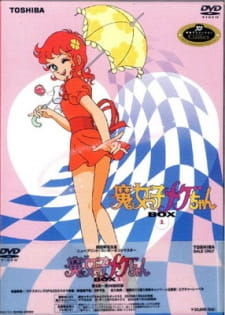
TV, 1974,
72 eps
Me:-
Author:10
Introduction:
Another "original" entry in the "Toei Majokko" series. Draws some inspiration from the famous series and earlier part of the "Majokko" series "Cutey Honey". While Cutey Honey was focused more to the "male" audience it still drew popularity among "female" audience, this series feels more like a natural progression towards a more "empowering" approach to the sexuality and the characterization presented in girls entertainment.
The series itself follows Megu who came to human world from magical world and her "battle" with another candidate to become the new leader of the magical kingdom.
Review:
Megu, while staying typical in its premise to the earlier parts of the "Toei Majokko" series incorporates a new aspect that was not really present in the previous entries. Megu has "competition" and there are "battle" elements in the series. Unlike Sally and Akko where there really wasn't much if any consistent "opposition" or "battles", Megu has to "compete with a fellow "witch" Non.
This by itself was an interesting factor as after Megu the subsequent "entries" in the "Toei Majokko" series also had some kind of "opposition".
The usage of magic and the morals that the series presents regarding this are relatively interesting, also the series seems to subtly approach some more sexual aspects or visual portrayals of femininity at times, which wasn't unheard of when it came to shoujo manga or anime at the time, but something, that wasnt the norm either.
Another "original" entry in the "Toei Majokko" series. Draws some inspiration from the famous series and earlier part of the "Majokko" series "Cutey Honey". While Cutey Honey was focused more to the "male" audience it still drew popularity among "female" audience, this series feels more like a natural progression towards a more "empowering" approach to the sexuality and the characterization presented in girls entertainment.
The series itself follows Megu who came to human world from magical world and her "battle" with another candidate to become the new leader of the magical kingdom.
Review:
Megu, while staying typical in its premise to the earlier parts of the "Toei Majokko" series incorporates a new aspect that was not really present in the previous entries. Megu has "competition" and there are "battle" elements in the series. Unlike Sally and Akko where there really wasn't much if any consistent "opposition" or "battles", Megu has to "compete with a fellow "witch" Non.
This by itself was an interesting factor as after Megu the subsequent "entries" in the "Toei Majokko" series also had some kind of "opposition".
The usage of magic and the morals that the series presents regarding this are relatively interesting, also the series seems to subtly approach some more sexual aspects or visual portrayals of femininity at times, which wasn't unheard of when it came to shoujo manga or anime at the time, but something, that wasnt the norm either.
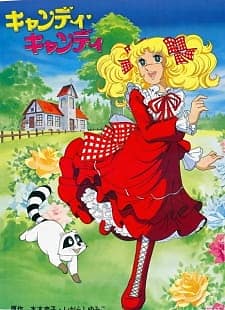
TV, 1976,
115 eps
Me:-
Author:10
Introduction:
There had been 10 years of "shoujo" anime and the first "big" one to change the status quo after "Mahoutsukai Sally" and "Attack No 1" I'd say came in the form of "Candy Candy".
The shoujo manga scene had already entered its "reneissance" as the "Year 24 Group" had already started "revolutionarizing" the shoujo manga scene. However many of those "revolutionary" works would not be adapted into anime until later. That is why I see "Candy Candy" as something that proved everyone that these series can be successful as animated products.
It is often said that "Candy Candy" was also one of the works along with series like "Uchuu Senkan Yamato" that were instrumental in launching the "Anime Boom" at 1970s.
It is also said that the popularity of the theme songs in Candy Candy and Uchuu Senkan Yamato made the producers of the music notice the opportunity that the theme songs provide and after these series many of the music label companies formed a specialized departments dedicated just to anime songs.
These days the series "Candy Candy" is rather infamously known for the legal dispute between its authors Igarashi Yumiko and Nagita Keiko, which has resulted the inability to get any access to the animated series or the manga legally in the last few decades.
Review:
At its heart Candy Candy is a story about growing up, the ups and downs and the struggle and drama happening all contribute towards the setting of "youth" and "growth".
The series also features "longing" relationship and it is written and set up in a way that enables the overall experience to feel "epic" by itself. It is said that the producers of the series wanted to create something akin to the famous "epic" literature works that were adapted in the form of "World Masterpiece Theater"
I'd say that they if that was what they tried to do it was a roaring success as the "character" and the "depth" of the relationships and the "growth" presented in the series truly fills those "epic" proportions.
There had been 10 years of "shoujo" anime and the first "big" one to change the status quo after "Mahoutsukai Sally" and "Attack No 1" I'd say came in the form of "Candy Candy".
The shoujo manga scene had already entered its "reneissance" as the "Year 24 Group" had already started "revolutionarizing" the shoujo manga scene. However many of those "revolutionary" works would not be adapted into anime until later. That is why I see "Candy Candy" as something that proved everyone that these series can be successful as animated products.
It is often said that "Candy Candy" was also one of the works along with series like "Uchuu Senkan Yamato" that were instrumental in launching the "Anime Boom" at 1970s.
It is also said that the popularity of the theme songs in Candy Candy and Uchuu Senkan Yamato made the producers of the music notice the opportunity that the theme songs provide and after these series many of the music label companies formed a specialized departments dedicated just to anime songs.
These days the series "Candy Candy" is rather infamously known for the legal dispute between its authors Igarashi Yumiko and Nagita Keiko, which has resulted the inability to get any access to the animated series or the manga legally in the last few decades.
Review:
At its heart Candy Candy is a story about growing up, the ups and downs and the struggle and drama happening all contribute towards the setting of "youth" and "growth".
The series also features "longing" relationship and it is written and set up in a way that enables the overall experience to feel "epic" by itself. It is said that the producers of the series wanted to create something akin to the famous "epic" literature works that were adapted in the form of "World Masterpiece Theater"
I'd say that they if that was what they tried to do it was a roaring success as the "character" and the "depth" of the relationships and the "growth" presented in the series truly fills those "epic" proportions.

TV, 1978,
42 eps
Me:-
Author:10
Introduction:
The classic taisho shoujo romance/drama by Yamato Waki
The series focuses on Benio, who has an "arranged" marriage type of deal that she is initially against. It is a classic enemies to lovers type of trope with lot of comedy and drama sprinkled in, definitely an influential piece.
Review:
The premis of the series is simple a young girl Benio is presented with an arranged marriage type of situation, which se is against but ends up "living" with the guy anyway.
The first thematical part of the series is spent on building up the emotion for the romance and I think it is really well done in the series, where the growing emotion is presented as establishing itself in a relatively slow manner. Which I'd say is a key part in the experience when it comes to the series.
When it comes to the story the emotion and the buildup are and the whole setup of the initial premise is essentially reversed using a relative culmination points that factualize the emotional growth of the character.
The series also incorporates many historical portrayals and presents itself true to its historical aesthetic which I think adds another layer of depth into the emotion that is presented in the series.
The series I'd say also really captures the "essence" when it comes to the Taisho period of Japan and the history relating to that period.
The classic taisho shoujo romance/drama by Yamato Waki
The series focuses on Benio, who has an "arranged" marriage type of deal that she is initially against. It is a classic enemies to lovers type of trope with lot of comedy and drama sprinkled in, definitely an influential piece.
Review:
The premis of the series is simple a young girl Benio is presented with an arranged marriage type of situation, which se is against but ends up "living" with the guy anyway.
The first thematical part of the series is spent on building up the emotion for the romance and I think it is really well done in the series, where the growing emotion is presented as establishing itself in a relatively slow manner. Which I'd say is a key part in the experience when it comes to the series.
When it comes to the story the emotion and the buildup are and the whole setup of the initial premise is essentially reversed using a relative culmination points that factualize the emotional growth of the character.
The series also incorporates many historical portrayals and presents itself true to its historical aesthetic which I think adds another layer of depth into the emotion that is presented in the series.
The series I'd say also really captures the "essence" when it comes to the Taisho period of Japan and the history relating to that period.
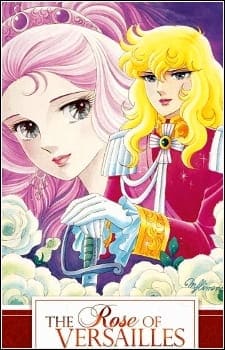
TV, 1979,
40 eps
Me:-
Author:10
Introduction:
The classic that everyone knows, probably doesn't need much introduction, the masterpiece of storytelling crafted by Ikeda Riyoko. Probably one of the most critically acclaimed "shoujo" series out there, both the manga and the animated series, rightfully so.
Review:
The setting is the historical period at the turbulent times leading to the French Revolution. There is a young individual named Oscar and another individual Maria Antoinette.
The excellent characters and the utilisation of the dramatic elements of the setting I'd say enhance the impact the this masterpiece has.
The classic that everyone knows, probably doesn't need much introduction, the masterpiece of storytelling crafted by Ikeda Riyoko. Probably one of the most critically acclaimed "shoujo" series out there, both the manga and the animated series, rightfully so.
Review:
The setting is the historical period at the turbulent times leading to the French Revolution. There is a young individual named Oscar and another individual Maria Antoinette.
The excellent characters and the utilisation of the dramatic elements of the setting I'd say enhance the impact the this masterpiece has.
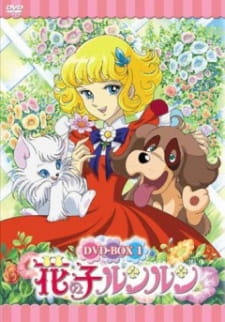
TV, 1979,
50 eps
Me:-
Author:10
Introduction:
Another "original" entry in the "Toei Majokko" series. This time with transformations and setting taking place around Europe.
The series has more focus of "fashion", "romance" and "comedic oppostion" rather than magic by itself. I'd say that by journeying throughout Europe in the series, Lunlun learns more about herself, her "emotions" and relationships.
Review:
The series is focused on a "normal" girl who is presented with a "mission" which essentially enables her to be "special". This special status and the mission and their relation to the journey of the character are the key points presented in the series.
Visually the series employs similar philosophy that was seen previously in Candy Candy and I think the role of that philosophy and the relative "special" status of the character and the related journey serve as a metaphor for a "destined encounter".
What that means here is that I think the journey itself makes the charater trancend her "normal" status into "special" even though the emphasis of the series paits this aspect in reverse. Essentially the journey here is more important that the presented "mission".
Another key factor in the series is of course the companions and the magical presentation of the "speciality" that relates to the character and the journey.
There is also a relative opposition presented in the series though I view the opposition in the series as a metaphor for the struggle of journey rather than an actual opposition.
Another "original" entry in the "Toei Majokko" series. This time with transformations and setting taking place around Europe.
The series has more focus of "fashion", "romance" and "comedic oppostion" rather than magic by itself. I'd say that by journeying throughout Europe in the series, Lunlun learns more about herself, her "emotions" and relationships.
Review:
The series is focused on a "normal" girl who is presented with a "mission" which essentially enables her to be "special". This special status and the mission and their relation to the journey of the character are the key points presented in the series.
Visually the series employs similar philosophy that was seen previously in Candy Candy and I think the role of that philosophy and the relative "special" status of the character and the related journey serve as a metaphor for a "destined encounter".
What that means here is that I think the journey itself makes the charater trancend her "normal" status into "special" even though the emphasis of the series paits this aspect in reverse. Essentially the journey here is more important that the presented "mission".
Another key factor in the series is of course the companions and the magical presentation of the "speciality" that relates to the character and the journey.
There is also a relative opposition presented in the series though I view the opposition in the series as a metaphor for the struggle of journey rather than an actual opposition.
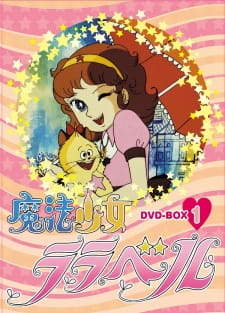
TV, 1980,
49 eps
Me:-
Author:10
Introduction:
"Mahou Shoujo Lalabel" was the last series in the "Toei Majokko" series. It also pioneered the term "Mahou Shoujo".
It is rumored that the representatives of "Toei" said that they ended the "Majokko Series" even as it was still relatively popular due to the fact that "Girls are not as vulnerable anymore, and they dont need the help of magic to help them reach their dreams".
Some say that this was a mistake by their part, and eventually they did a remake of "Himitsu no Akko-chan" and "Mahoutsukai Sally" less than 10 years after the supposed statement.
This "break" by Toei in their "Magical themed" series gave a chance for other creators to strike in the market that Toei had basically dominated before this. This can be seen as another "important" point in the history of "shoujo" anime, or as an end of "an era".
Lalabel is the first in the "Toei Majokko" series to be spearheaded completely by the performance of "The Queen of Anime Music" Mitsuko Horie, who had mainly only done the theme songs for some of the previous entries like "Mahou no Mako-chan" and "Hana no Ko Lunlun".
You could say that this inclusion was something that in some eyes promoted her to be the "face" of the series and "Shoujo" anime at that time in general. This may lead back to the success of her song performance in the series "Candy Candy" that essentially changed the landscape when it comes to "shoujo" anime.
"Mahou Shoujo Lalabel" was the last series in the "Toei Majokko" series. It also pioneered the term "Mahou Shoujo".
It is rumored that the representatives of "Toei" said that they ended the "Majokko Series" even as it was still relatively popular due to the fact that "Girls are not as vulnerable anymore, and they dont need the help of magic to help them reach their dreams".
Some say that this was a mistake by their part, and eventually they did a remake of "Himitsu no Akko-chan" and "Mahoutsukai Sally" less than 10 years after the supposed statement.
This "break" by Toei in their "Magical themed" series gave a chance for other creators to strike in the market that Toei had basically dominated before this. This can be seen as another "important" point in the history of "shoujo" anime, or as an end of "an era".
Lalabel is the first in the "Toei Majokko" series to be spearheaded completely by the performance of "The Queen of Anime Music" Mitsuko Horie, who had mainly only done the theme songs for some of the previous entries like "Mahou no Mako-chan" and "Hana no Ko Lunlun".
You could say that this inclusion was something that in some eyes promoted her to be the "face" of the series and "Shoujo" anime at that time in general. This may lead back to the success of her song performance in the series "Candy Candy" that essentially changed the landscape when it comes to "shoujo" anime.
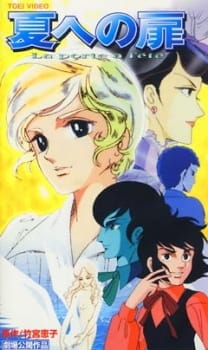
Movie, 1981,
1 ep
Me:-
Author:10
Introduction:
From influential manga by Takemiya Keiko
Review:
This film is an astounding portrayal of sexuality, youth and the struggle of emotional growth. The visual presentation for these themes doesn't leave anyone cold after the experience that is this film.
The film builds up towards its premise from the start utilising excellent design and visual touch for the atmosphere and flow. These elements enable you to relate to the MC his struggle and relationships around him. The art enables you to see the events unfolding through the eyes of the character, which I think adds another layer of immersion into the film.
You can pretty quickly pick up on the MC and his philosophy towards his inevitable emotional struggle and position relative to the relationships around him, this serves as the premise on which the film builds up its presentation. The philosophy of the MC is presented through the lens of an adolescent individual and the characters and their design match this portrayal. You can see the adult characters of the film have complete control over the younger characters in this film. This is presented both visually and metaphorically throughout the film. The main characters struggle relates to his own philosophy versus the overwhelming presence and control coming from a stronger entity. This adds another layer to the theme of sexuality and control of yourself that relate to the philosophy of the MC.
The relationships of the MC are another main theme of the film, his position in relation to his peers is brought in question not only by himself, but also other parties. He is not sure about himself in regards of his relationships and his position in those relationships, which partly creates the struggle that is portrayed in this film. Throughout the film he tries to deny himself in relation to his relationships culminates into an internal conflict, that is presented visually as the climax of the film.
The art and music of the film reinforce the MC position relative to his relationships around him and in some shots he is portrayed as strong among his peers compared to his portrayal against the controlling entity where he was frail and defenceless. This visual presentation is one of the finest I've seen in any anime and it definitely adds another layer of depth into the film. The music compensates the artistic portrayal and keeps you engaged to the visual experience constantly.
Overall this film artistically presents one of a kind experience through youth, sexuality and self discovery.
From influential manga by Takemiya Keiko
Review:
This film is an astounding portrayal of sexuality, youth and the struggle of emotional growth. The visual presentation for these themes doesn't leave anyone cold after the experience that is this film.
The film builds up towards its premise from the start utilising excellent design and visual touch for the atmosphere and flow. These elements enable you to relate to the MC his struggle and relationships around him. The art enables you to see the events unfolding through the eyes of the character, which I think adds another layer of immersion into the film.
You can pretty quickly pick up on the MC and his philosophy towards his inevitable emotional struggle and position relative to the relationships around him, this serves as the premise on which the film builds up its presentation. The philosophy of the MC is presented through the lens of an adolescent individual and the characters and their design match this portrayal. You can see the adult characters of the film have complete control over the younger characters in this film. This is presented both visually and metaphorically throughout the film. The main characters struggle relates to his own philosophy versus the overwhelming presence and control coming from a stronger entity. This adds another layer to the theme of sexuality and control of yourself that relate to the philosophy of the MC.
The relationships of the MC are another main theme of the film, his position in relation to his peers is brought in question not only by himself, but also other parties. He is not sure about himself in regards of his relationships and his position in those relationships, which partly creates the struggle that is portrayed in this film. Throughout the film he tries to deny himself in relation to his relationships culminates into an internal conflict, that is presented visually as the climax of the film.
The art and music of the film reinforce the MC position relative to his relationships around him and in some shots he is portrayed as strong among his peers compared to his portrayal against the controlling entity where he was frail and defenceless. This visual presentation is one of the finest I've seen in any anime and it definitely adds another layer of depth into the film. The music compensates the artistic portrayal and keeps you engaged to the visual experience constantly.
Overall this film artistically presents one of a kind experience through youth, sexuality and self discovery.

TV, 1981,
29 eps
Me:-
Author:10
Introduction:
Only anime adaptation from the works of shoujo manga legend Mizuno Hideko, who is said to have influenced many of the "Year 24 Group" members.
The manga series was published in shoujo magazine "Ribon" in 1966 - 1967.
Only anime adaptation from the works of shoujo manga legend Mizuno Hideko, who is said to have influenced many of the "Year 24 Group" members.
The manga series was published in shoujo magazine "Ribon" in 1966 - 1967.
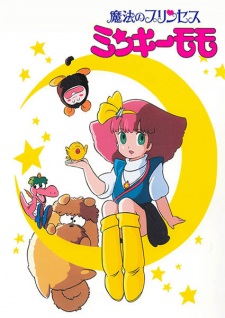
TV, 1982,
63 eps
Me:-
Author:10
Introduction:
"Minky Momo" was the first one to "capitalize" due to the "break" by Toei in their productions when it came to "Magical themed" series.
The premise is relatively similar than the Toei works where "a princess" from another magical world comes to live on earth. Essentially you could say it is kind of a combo of Sally and Akko, premise is more in line with Sally and the powers more in line with with Akko. Or you could say Lunlun.
The series is more widely known for its "infamous" episode.
The series is also said to be known as one of the series along with Creamy Mami to give rise to the "moe" movement and a series that had a following outside of the "young female" target audience.
Review:
The series takes a lot of influence from the "Toei Majokko" series as the supposed goal was to captialize from the absence of that series and as such the premise shows lot of similar elements, also the structure of the episodes is relatively similar.
The turning point of the series however is ultimately the "infamous" episode that essentially as an experience went against "everything" that the original "Toei Majokko" series has stood for and thus opened a new realm of possibility when it comes to the explortaion of themes in series like these.
"Minky Momo" was the first one to "capitalize" due to the "break" by Toei in their productions when it came to "Magical themed" series.
The premise is relatively similar than the Toei works where "a princess" from another magical world comes to live on earth. Essentially you could say it is kind of a combo of Sally and Akko, premise is more in line with Sally and the powers more in line with with Akko. Or you could say Lunlun.
The series is more widely known for its "infamous" episode.
The series is also said to be known as one of the series along with Creamy Mami to give rise to the "moe" movement and a series that had a following outside of the "young female" target audience.
Review:
The series takes a lot of influence from the "Toei Majokko" series as the supposed goal was to captialize from the absence of that series and as such the premise shows lot of similar elements, also the structure of the episodes is relatively similar.
The turning point of the series however is ultimately the "infamous" episode that essentially as an experience went against "everything" that the original "Toei Majokko" series has stood for and thus opened a new realm of possibility when it comes to the explortaion of themes in series like these.

TV, 1982,
34 eps
Me:-
Author:10
Introduction:
The iconic romantic epic series with supernatural touch to the relationships and the dynamic around the characters and their development.
Review:
Features a family type of "setting" where "romance" and the relationships within the family and outside of the family play significant role. I'd say that the visual portrayal of the "family" and the "gimmicks" relating to these "relationships" and characters can be seen as metaphors for "emotional struggle" during youth relating to romance and self discovery.
The iconic romantic epic series with supernatural touch to the relationships and the dynamic around the characters and their development.
Review:
Features a family type of "setting" where "romance" and the relationships within the family and outside of the family play significant role. I'd say that the visual portrayal of the "family" and the "gimmicks" relating to these "relationships" and characters can be seen as metaphors for "emotional struggle" during youth relating to romance and self discovery.

TV, 1982,
49 eps
Me:-
Author:10
Introduction:
The classic BL comedy series.
Review:
The series goes straight to the point when it comes to homosexual "innuendos", elements and relationships. The story of the series is moreso used as a backdrop to create these "highly stylistic" situations that highlight the comedy and explore the relationships between the characters.
The classic BL comedy series.
Review:
The series goes straight to the point when it comes to homosexual "innuendos", elements and relationships. The story of the series is moreso used as a backdrop to create these "highly stylistic" situations that highlight the comedy and explore the relationships between the characters.

TV, 1983,
45 eps
Me:-
Author:10
Introduction:
From Yumiko Igarashi, and you can see that the influence of the success of "Candy Candy" is relatively strong here, though I wouldn't say that it is a bad thing.
The series presents its premise as a relative mystery drawing parallel to the premise and character setting of Candy Candy there. The series also presents a similar longing relationship and the dramatic struggle relating to the relationship.
The visual portrayal I'd say is one of the strenghts of the series. The iconic character design by Igarashi I'd say elevates the visual metaphors relating to the relationships, drama and youth presented in the series into a new level.
From Yumiko Igarashi, and you can see that the influence of the success of "Candy Candy" is relatively strong here, though I wouldn't say that it is a bad thing.
The series presents its premise as a relative mystery drawing parallel to the premise and character setting of Candy Candy there. The series also presents a similar longing relationship and the dramatic struggle relating to the relationship.
The visual portrayal I'd say is one of the strenghts of the series. The iconic character design by Igarashi I'd say elevates the visual metaphors relating to the relationships, drama and youth presented in the series into a new level.
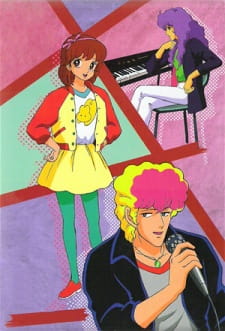
TV, 1983,
42 eps
Me:-
Author:10
Romance series focusing on "youth".
Another important element featured in the series is music, in the series by itself and in the related performance in the form of theme songs for the series.
The relationship presented in the series, features a "musical" aspect where the aspect by itself is one of the keys relating to the struggle of the MC and her relationships.
The theme songs in the series are performed by Mitsuko Horie, who also acts as a voice actor for the main character. Because of that I'd say that her performance related to the series presents itself as a metaphor relating to the emotion present in the relationship and the struggle of the main character. I'd say that this metaphorical view evolves the series and the related performance both into a new level.
Another important element featured in the series is music, in the series by itself and in the related performance in the form of theme songs for the series.
The relationship presented in the series, features a "musical" aspect where the aspect by itself is one of the keys relating to the struggle of the MC and her relationships.
The theme songs in the series are performed by Mitsuko Horie, who also acts as a voice actor for the main character. Because of that I'd say that her performance related to the series presents itself as a metaphor relating to the emotion present in the relationship and the struggle of the main character. I'd say that this metaphorical view evolves the series and the related performance both into a new level.

TV, 1983,
52 eps
Me:-
Author:10
Introduction:
Alongside "Minky Momo" Creamy Mami was another series that was able to capitalize due to the absence of the "Toei Magical Girls". Creamy Mami was also the first in the "Pierrot Magical Girls" series that was mainly active in the period that Toei was inactive.
The series also presented essentially a new approach to the philosophy when it comes to Mahou Shoujo series, as the main charater was usimg magic to reach her own dreams, instead of focusing the magic on helping others like was the unspoken rule in earlier magical series.
The earlier mahou shoujo series mostly presented the magic as a something "foreign" and the philosophy of the girls was also more "foreign". The appeal presented itself for as a "compnaion" rather than "self-interest" The concept of magic was always used outside of the concept of self and the improvement was based on the fantasy of magic itself rather than the "empowerement" of an individual.
The "foreign" element that was presented with the premise in the earlier series, always was overtaken by the preference of the "domestic" elements presented in the series. ie. Magical Girls wanting to become normal girls.
In Creamy Mami this philosophy was essentially reversed as the portrayal of the foreign element was presented as an "empowering" element where the "domestic" elements lost to the preference of "foreign" elements when it comes to the "emporewring" of the elements.
The concept of magic gained a new meaning when applied to these series, the magic was used to empower the dreams of the "individual" who was presented as a stand in and as a metaphor for the market itself.
Alongside "Minky Momo" Creamy Mami was another series that was able to capitalize due to the absence of the "Toei Magical Girls". Creamy Mami was also the first in the "Pierrot Magical Girls" series that was mainly active in the period that Toei was inactive.
The series also presented essentially a new approach to the philosophy when it comes to Mahou Shoujo series, as the main charater was usimg magic to reach her own dreams, instead of focusing the magic on helping others like was the unspoken rule in earlier magical series.
The earlier mahou shoujo series mostly presented the magic as a something "foreign" and the philosophy of the girls was also more "foreign". The appeal presented itself for as a "compnaion" rather than "self-interest" The concept of magic was always used outside of the concept of self and the improvement was based on the fantasy of magic itself rather than the "empowerement" of an individual.
The "foreign" element that was presented with the premise in the earlier series, always was overtaken by the preference of the "domestic" elements presented in the series. ie. Magical Girls wanting to become normal girls.
In Creamy Mami this philosophy was essentially reversed as the portrayal of the foreign element was presented as an "empowering" element where the "domestic" elements lost to the preference of "foreign" elements when it comes to the "emporewring" of the elements.
The concept of magic gained a new meaning when applied to these series, the magic was used to empower the dreams of the "individual" who was presented as a stand in and as a metaphor for the market itself.
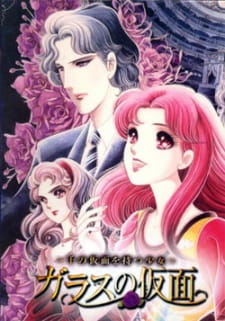
TV, 1984,
23 eps
Me:-
Author:10
Introduction:
The shoujo manga "epic" done by Miuchi Suzue, started in 1976 and has continued to this day.
Review:
The portrayal of Kitajima Maya and the rivalry between the characters is done really well in the series, the drama (melodrama) you could say is relatively "over the top" but I see it serving a purpose when it comes to the "high stakes" that are present when it comes to the "rivalry" and the "passion" of the characters involved.
The shoujo manga "epic" done by Miuchi Suzue, started in 1976 and has continued to this day.
Review:
The portrayal of Kitajima Maya and the rivalry between the characters is done really well in the series, the drama (melodrama) you could say is relatively "over the top" but I see it serving a purpose when it comes to the "high stakes" that are present when it comes to the "rivalry" and the "passion" of the characters involved.
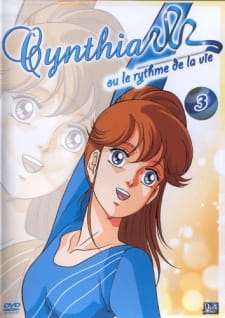
TV, 1986,
19 eps
Me:-
Author:10
Introduction:
A very grounded portrayal of romance compared to the often more "dramatic" portrayals seen in "shoujo" works, the series also offers an artistic perspective to the philosophy when it comes to the main character and the "romance", this is due to her relationship to the "sport" and the " artistic" and gentle nature of the sport itself.
A very grounded portrayal of romance compared to the often more "dramatic" portrayals seen in "shoujo" works, the series also offers an artistic perspective to the philosophy when it comes to the main character and the "romance", this is due to her relationship to the "sport" and the " artistic" and gentle nature of the sport itself.

OVA, 1987,
1 ep
Me:-
Author:10
Introduction:
Another classic BL series that does a deep dive into the exploration of "relationship dynamics"
The series presents its premise as a "flashback" and through that lens explores the depth of the "dynamic" between the characters and their relationship. The series also puts heavy emphasis into the "youth" of the portrayal.
Another classic BL series that does a deep dive into the exploration of "relationship dynamics"
The series presents its premise as a "flashback" and through that lens explores the depth of the "dynamic" between the characters and their relationship. The series also puts heavy emphasis into the "youth" of the portrayal.

TV, 1987,
21 eps
Me:-
Author:10
Introduction:
The presentation utilises the setting of "historical drama" and "western aesthetic" to build upon a dramatic portrayal of growth and relationships.
The presentation utilises the setting of "historical drama" and "western aesthetic" to build upon a dramatic portrayal of growth and relationships.
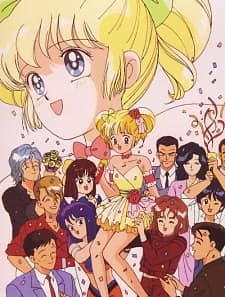
TV, 1989,
51 eps
Me:-
Author:10
Introduction:
More of a dramatic approach to the "Idol" genre that how it is portrayed in modern series.
The series follows Eriko a girl who is caught up in a tragedy, and her struggle in the entertainment industry. The series presents the struggle and the industry in a dramatical manner, which I'd say can be seen as a criticism or commentary of the nature of the idol or entertainment industry. This criticism or commentary is presented as a backdrop to the drama and the struggle portrayed in the series.
More of a dramatic approach to the "Idol" genre that how it is portrayed in modern series.
The series follows Eriko a girl who is caught up in a tragedy, and her struggle in the entertainment industry. The series presents the struggle and the industry in a dramatical manner, which I'd say can be seen as a criticism or commentary of the nature of the idol or entertainment industry. This criticism or commentary is presented as a backdrop to the drama and the struggle portrayed in the series.

OVA, 1990,
2 eps
Me:-
Author:10
Introduction:
Licca-chan is a popular girls toy doll franchise. The franchise and the dolls draw their roots to the 1960s shoujo manga scene. Miyako Maki a popular shoujo mangaka provided the original design for the dolls in late 1960s.
Miyako Maki was known for her iconic shoujo art and character design with stories focusing on passion and fashion while also empowering girls through that presentation of fashion. Her popularity grew in 1960s with hit works such as "Maki no Kuchibue".
Licca-chan dolls had been friends to girls for over 20 years at the time of release of this film. Licca-chan 4th generation had just released in 1987 and had taken everyone by storm.
This film takes "Licca-chan" in an "isekai" adventure through imagitionary visual and atmospheric setting.
Licca-chan is a popular girls toy doll franchise. The franchise and the dolls draw their roots to the 1960s shoujo manga scene. Miyako Maki a popular shoujo mangaka provided the original design for the dolls in late 1960s.
Miyako Maki was known for her iconic shoujo art and character design with stories focusing on passion and fashion while also empowering girls through that presentation of fashion. Her popularity grew in 1960s with hit works such as "Maki no Kuchibue".
Licca-chan dolls had been friends to girls for over 20 years at the time of release of this film. Licca-chan 4th generation had just released in 1987 and had taken everyone by storm.
This film takes "Licca-chan" in an "isekai" adventure through imagitionary visual and atmospheric setting.
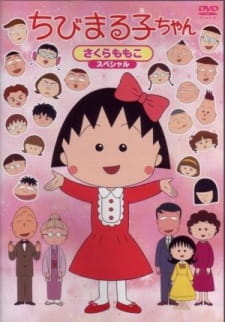
TV, 1990,
142 eps
Me:-
Author:10
Introduction:
Another important point in the history of "shoujo" anime. The series Chibi Maruko-chan by Momoko Sakura quickly became the most popular shoujo anime, and one of the most popular anime ever, and to this day it is still airing and has over 1500 episodes.
It's airing slot is matched with the airing slot of the "juggernaut" "Sazae-san" and they air back to back every sunday. Some people claim that its success is because of Sazae-san, but Chibi Maruko-chan is one of the only anime series that can rival "Sazae-san" in popularity.
Review:
The series by its structure shares lot of similarity with series like "Sazae-san" and "Crayon Shin-chan", the series essentially focuses on the daily life of a young girl known as "Maruko" and the relationships that she has with her friends at school and her family (including extended family) at her home.
The series portrays these elements through a very nostalagic lens, and it is possible for everyone, and I mean everyone from babies to granpas to find something relatable in this portrayal. I'd say that because of that aspect and the brilliant emotional buildup linked with the "nostalagic" portrayal is the reason why the series is so highly regarded and popular.
Another important point in the history of "shoujo" anime. The series Chibi Maruko-chan by Momoko Sakura quickly became the most popular shoujo anime, and one of the most popular anime ever, and to this day it is still airing and has over 1500 episodes.
It's airing slot is matched with the airing slot of the "juggernaut" "Sazae-san" and they air back to back every sunday. Some people claim that its success is because of Sazae-san, but Chibi Maruko-chan is one of the only anime series that can rival "Sazae-san" in popularity.
Review:
The series by its structure shares lot of similarity with series like "Sazae-san" and "Crayon Shin-chan", the series essentially focuses on the daily life of a young girl known as "Maruko" and the relationships that she has with her friends at school and her family (including extended family) at her home.
The series portrays these elements through a very nostalagic lens, and it is possible for everyone, and I mean everyone from babies to granpas to find something relatable in this portrayal. I'd say that because of that aspect and the brilliant emotional buildup linked with the "nostalagic" portrayal is the reason why the series is so highly regarded and popular.

TV, 1991,
39 eps
Me:-
Author:10
Introduction:
Dezaki brings the best out of this work by Ikeda Riyoko here
Review:
After "Ace wo Nerae" and "Versailles no Bara" Dezaki returns to "shoujo" scene and breaths life into this psychological and dramatic exploration of emotions, identity and self, explored in a "youthful" all female school setting.
The emotional buildup and dramatic events are lead into perfectly timed visual culminations. Lot of emphasis and stylized imagery is utilized in the series. To further explore the themes presented in the narrative.
The visual portrayal in the series is one of the finest out there and I'd say captures the essence of the "shoujo" manga and the spirit related to the 70s character design better than the original manga did it. The visual is of course emphasised even more by Dezaki thorugh his genius ussage of "postcard memories" acting as a visual and emotional culmination for many of the key moments throughout the series.
The presentation fits perfectly into the heavy drama, intense moments and heavy themes presented as a part of the series.
Dezaki brings the best out of this work by Ikeda Riyoko here
Review:
After "Ace wo Nerae" and "Versailles no Bara" Dezaki returns to "shoujo" scene and breaths life into this psychological and dramatic exploration of emotions, identity and self, explored in a "youthful" all female school setting.
The emotional buildup and dramatic events are lead into perfectly timed visual culminations. Lot of emphasis and stylized imagery is utilized in the series. To further explore the themes presented in the narrative.
The visual portrayal in the series is one of the finest out there and I'd say captures the essence of the "shoujo" manga and the spirit related to the 70s character design better than the original manga did it. The visual is of course emphasised even more by Dezaki thorugh his genius ussage of "postcard memories" acting as a visual and emotional culmination for many of the key moments throughout the series.
The presentation fits perfectly into the heavy drama, intense moments and heavy themes presented as a part of the series.
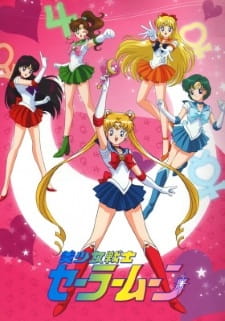
TV, 1992,
46 eps
Me:-
Author:10
Introduction:
Again important series when it comes to history of "shoujo" anime, the series gained worldwide popularity and evolved the genre of "Magical Girls" into something very different than how "Mahoutsukai Sally" and "Himitsu no Akko-chan" initially set up the "genre".
After Creamy Mami and Minky Momo had established the empowering "foreign" element when it comes to the concept of magic, Sailor Moon took the concept in and its application into a new level. The "foreign" element was no longer used just for the metaphor of empowering the dreams, it was presented as element that enables the individual to surpass the limits applied by the "society".
This application relied, on the visual presentation and the metaphors, their visual presentation in the series and how the relationships and struggle ffactored into that culmination.
Review:
Everyone knows Sailor Moon and its popularity, the series doesn't leave anyone cold with its fights and portrayals of emotion. An empowering series for the audience.
Again important series when it comes to history of "shoujo" anime, the series gained worldwide popularity and evolved the genre of "Magical Girls" into something very different than how "Mahoutsukai Sally" and "Himitsu no Akko-chan" initially set up the "genre".
After Creamy Mami and Minky Momo had established the empowering "foreign" element when it comes to the concept of magic, Sailor Moon took the concept in and its application into a new level. The "foreign" element was no longer used just for the metaphor of empowering the dreams, it was presented as element that enables the individual to surpass the limits applied by the "society".
This application relied, on the visual presentation and the metaphors, their visual presentation in the series and how the relationships and struggle ffactored into that culmination.
Review:
Everyone knows Sailor Moon and its popularity, the series doesn't leave anyone cold with its fights and portrayals of emotion. An empowering series for the audience.

TV, 1994,
76 eps
Me:-
Author:10
Introduction:
Living in the same house trope.
The premise presents itself through a lens of a "forced fantasy relationship". This type of relationship draws its appeal from the factors outside of the "control" of the subject. These elements I'd say are used as a metaphor for the "youth" that is also present in the series. The elements also play a key role when it comes to the comedy and the struggle related to the relationships around the "subject".
Another interesting part of the series is the philosophy of the main charcter. The approach related to her philosophy emphasizes "youth" and the elements related to the "fantasy" are used as a culmination when it comes to her struggle and the presentation of her philosophy in the series.
Living in the same house trope.
The premise presents itself through a lens of a "forced fantasy relationship". This type of relationship draws its appeal from the factors outside of the "control" of the subject. These elements I'd say are used as a metaphor for the "youth" that is also present in the series. The elements also play a key role when it comes to the comedy and the struggle related to the relationships around the "subject".
Another interesting part of the series is the philosophy of the main charcter. The approach related to her philosophy emphasizes "youth" and the elements related to the "fantasy" are used as a culmination when it comes to her struggle and the presentation of her philosophy in the series.

TV, 1995,
52 eps
Me:-
Author:9
A Classic approach to the "isekai" trope that emphasies the empowering aspects surrounding the main character and the interest characters that surround her. Also provides an in depth portrayal of relationships and how they evolve.
The "isekai" aspect of the series is used more as a vehicle to serve as a tool for "empowerement" and fantasy to the main character reinforcing her with a group of individiuals and "new" relationships that are one of the key aspects of the series.
The surrounding relationships of the main character I'd say play a key role in the "empowering" part of the fantasy where the struggle of the main character revolves mostly around the culmination of the relationships. The fantasy aspect draws its appeal also from the relationships, the struggle mainly relates to the dynamic between the "strength" and the "power" present in the relationships in contrast to the philosophy employed by the main character.
The philosophy of the main character presents itself as a more typical and reserved in contrast of the powerful and assertive role of the relationships and the empowering fantasy around her. This conflic is explored in depth throughout the series.
The "isekai" aspect of the series is used more as a vehicle to serve as a tool for "empowerement" and fantasy to the main character reinforcing her with a group of individiuals and "new" relationships that are one of the key aspects of the series.
The surrounding relationships of the main character I'd say play a key role in the "empowering" part of the fantasy where the struggle of the main character revolves mostly around the culmination of the relationships. The fantasy aspect draws its appeal also from the relationships, the struggle mainly relates to the dynamic between the "strength" and the "power" present in the relationships in contrast to the philosophy employed by the main character.
The philosophy of the main character presents itself as a more typical and reserved in contrast of the powerful and assertive role of the relationships and the empowering fantasy around her. This conflic is explored in depth throughout the series.

TV, 1996,
51 eps
Me:-
Author:10
Introduction:
One of the best selling shoujo manga
Series follows a young individual who comes in contact with a "rich" type of group of boys, who almost instantly begin to tease her and the struggle surrounding the girl and the relationships is up to an emotional start.
One of the best selling shoujo manga
Series follows a young individual who comes in contact with a "rich" type of group of boys, who almost instantly begin to tease her and the struggle surrounding the girl and the relationships is up to an emotional start.
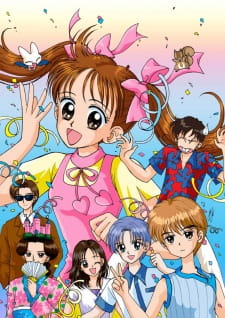
TV, 1996,
102 eps
Me:-
Author:10
Introduction:
Epic drama relating to the "youth" and struggle in the "entertainment industry".
The series presents its character relatively acting "outside" of the typical spehere when it comes to the relationship with the "society". This is established by presenting a several important culmination points throughout the series and how the character has to face these elements and the struggle related to these elements.
The struggle of the character and the conflic relating to her philosophy are both established early, and explored in depth throughout the series. Exploration relying on the relationships around her and several important culmination points relating to these relationships.
Epic drama relating to the "youth" and struggle in the "entertainment industry".
The series presents its character relatively acting "outside" of the typical spehere when it comes to the relationship with the "society". This is established by presenting a several important culmination points throughout the series and how the character has to face these elements and the struggle related to these elements.
The struggle of the character and the conflic relating to her philosophy are both established early, and explored in depth throughout the series. Exploration relying on the relationships around her and several important culmination points relating to these relationships.

TV, 1997,
39 eps
Me:-
Author:10
Introduction:
Ikuhara takes his turn to explore the themes of "femininity", "breaking through the norms" and "society" in this highly stylized work full of visual "metaphors"
Utena starts off as a forward story where the elements are emphasized through repetition where the usage of "metaphors" and stylized imagery is used as a vehicle to culminate the exploration of the struggle and dymamic between the characters.
The characters themselves act only as a front to their philosophy that I'd say is presented through their actions, repetition and visual portrayal linked to these elements. The music in the series reinforces the culmination points and emotion presented through the repetition.
Ikuhara takes his turn to explore the themes of "femininity", "breaking through the norms" and "society" in this highly stylized work full of visual "metaphors"
Utena starts off as a forward story where the elements are emphasized through repetition where the usage of "metaphors" and stylized imagery is used as a vehicle to culminate the exploration of the struggle and dymamic between the characters.
The characters themselves act only as a front to their philosophy that I'd say is presented through their actions, repetition and visual portrayal linked to these elements. The music in the series reinforces the culmination points and emotion presented through the repetition.
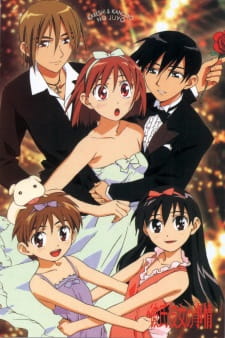
TV, 1998,
26 eps
Me:-
Author:10
Introduction:
After Gunbuster that paid homage to the classic shoujo series Ace wo Nerae and the success of Evangelion the famous director Hideaki Anno tries his hand at a shoujo series.
The series is a romantic series following the the relationship and the struggle surrounding the characters and their relationship.
After Gunbuster that paid homage to the classic shoujo series Ace wo Nerae and the success of Evangelion the famous director Hideaki Anno tries his hand at a shoujo series.
The series is a romantic series following the the relationship and the struggle surrounding the characters and their relationship.
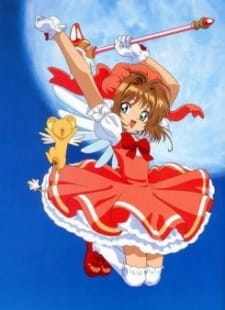
TV, 1998,
70 eps
Me:-
Author:10
Introduction:
From CLAMP, a relatively nuanced approach to the magical girls genre where the visual presentation and design of the portrayal is highlighted. The design and "the visual gimmicks" I'd say also can be seen as a visual metaphor for the relationships that surround the characters.
From CLAMP, a relatively nuanced approach to the magical girls genre where the visual presentation and design of the portrayal is highlighted. The design and "the visual gimmicks" I'd say also can be seen as a visual metaphor for the relationships that surround the characters.

TV, 1999,
51 eps
Me:-
Author:10
Introduction:
Before "Precure" and after "Sailor Moon" brings back the "vibe" of the "Toei Majokko" series without actually brining it back as its more of a "hybrid" between the "vibe" I mentioned earlier and the premise of "Sailor Moon"
Before "Precure" and after "Sailor Moon" brings back the "vibe" of the "Toei Majokko" series without actually brining it back as its more of a "hybrid" between the "vibe" I mentioned earlier and the premise of "Sailor Moon"
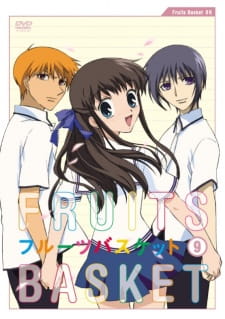
TV, 2001,
26 eps
Me:-
Author:10
Introduction:
The "Modern Classic" when it comes to "shoujo" anime, many themes including "family" are explored through the lens of "innocence".
The original series only establishes the themes and the struggle relating to the philosophy of the main character, it is recommended to complete the experience with the 2019 remake series which presents a conclusion to the struggle and the themes presented in the original series.
The conflict in the philosophy of the main character is established early and she draws "empowerement" from the relationships around her in order to escape from facing the root of the conflic and the struggle related to her philosophy, however the relationships and individuals surrounding her present their own struggle and the exploration and evolution of these relationships helps both sides to confront and face the root behind their struggle.
The portrayal of this relationship and struggle is dramatised and presented in a gentle and warm manner, which adds another layer of depth into the progression of the relationship I'd say.
The "Modern Classic" when it comes to "shoujo" anime, many themes including "family" are explored through the lens of "innocence".
The original series only establishes the themes and the struggle relating to the philosophy of the main character, it is recommended to complete the experience with the 2019 remake series which presents a conclusion to the struggle and the themes presented in the original series.
The conflict in the philosophy of the main character is established early and she draws "empowerement" from the relationships around her in order to escape from facing the root of the conflic and the struggle related to her philosophy, however the relationships and individuals surrounding her present their own struggle and the exploration and evolution of these relationships helps both sides to confront and face the root behind their struggle.
The portrayal of this relationship and struggle is dramatised and presented in a gentle and warm manner, which adds another layer of depth into the progression of the relationship I'd say.

TV, 2001,
43 eps
Me:-
Author:10
Introduction:
Influential 1960s series from Yokoyama Mitsuteru based on the 1960s manga and the TV series.
The series with it is almost like a time capsule to the classic vibe of magical girls and the wonders that they bring with them.
Influential 1960s series from Yokoyama Mitsuteru based on the 1960s manga and the TV series.
The series with it is almost like a time capsule to the classic vibe of magical girls and the wonders that they bring with them.
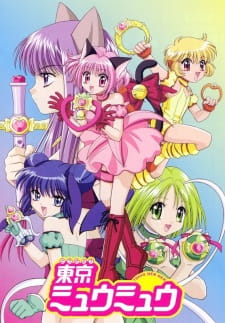
TV, 2002,
52 eps
Me:-
Author:9
A popular series with colorful approach to the magical girls with a theme around animals.

OVA, 2004,
1 ep
Me:-
Author:10
Introduction:
From the shoujo manga legend Ueda Toshiko, original manga published in "Shoujo Club" 1957 - 1962.
Most early shoujo mangaka were men, and shoujo manga didn't have a particular "identity" in 1950s, as it was mostly just used as "a springboard" for authors aiming for the more popular shounen magazines. However Ueda Toshiko took everyone by storm as a female author with "Fuichin-san" one of the "big hits" in the evolving 1950s - 1960s shoujo manga scene.
The series focuses on a young girl who meets a bratty rich "prince" type of kid and how they earn the trust of eachother in a dramatic story full of emotion.
From the shoujo manga legend Ueda Toshiko, original manga published in "Shoujo Club" 1957 - 1962.
Most early shoujo mangaka were men, and shoujo manga didn't have a particular "identity" in 1950s, as it was mostly just used as "a springboard" for authors aiming for the more popular shounen magazines. However Ueda Toshiko took everyone by storm as a female author with "Fuichin-san" one of the "big hits" in the evolving 1950s - 1960s shoujo manga scene.
The series focuses on a young girl who meets a bratty rich "prince" type of kid and how they earn the trust of eachother in a dramatic story full of emotion.

TV, 2004,
49 eps
Me:-
Author:10
Introduction:
Sailor Moon gave them the tools and not long after that "Precure" took the "Magical Girls" genre by storm and still dominates the market, with new season coming every year.
Review:
Each series introduces "a set" of characters, and "a set" that opposes these characters. The story revolves around the relationships between these "sets" of characters and how they affect each other. The main interest in each series I'd say is the emotion that "grows" throughout the series and "culminates" in a battle full of "action" in each episode.
This format I'd say enables the emotional culmination and development of the characters through this "action" and enables a consistent way of providing a visual "metaphor" for the "growth" and "emotion" that was represented in the "action" and development.
Sailor Moon gave them the tools and not long after that "Precure" took the "Magical Girls" genre by storm and still dominates the market, with new season coming every year.
Review:
Each series introduces "a set" of characters, and "a set" that opposes these characters. The story revolves around the relationships between these "sets" of characters and how they affect each other. The main interest in each series I'd say is the emotion that "grows" throughout the series and "culminates" in a battle full of "action" in each episode.
This format I'd say enables the emotional culmination and development of the characters through this "action" and enables a consistent way of providing a visual "metaphor" for the "growth" and "emotion" that was represented in the "action" and development.
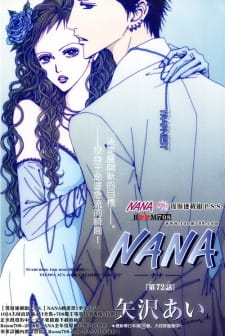
TV, 2006,
47 eps
Me:-
Author:10
Introduction:
Yazawa Ai took everyone by storm with the in depth character portrayal and "growth" that is found in "NANA"
NANA presents itself with a theme of growing up and what it means to grow up. This theme is portrayed through two individuals who each represent one side of relating to "youth". The main interest in the series is the relation of the "youth" between these two portrayals and the "adult" life and growing up.
The struggle in the series is mainly related to the conflic between the "youth" itself and it contrasting the "expectation" placed onto the "youth" by the "society" when it comes to growing up and adult life.
Another layer into the struggle is added by the relationships between the characetrs, the "youth" and how these elements work together. The two portrayals of the "youth" can also be seen as a metaphor for a "single youth" this adds another layer of depth into the portrayal of "youth" and character into the series.
Yazawa Ai took everyone by storm with the in depth character portrayal and "growth" that is found in "NANA"
NANA presents itself with a theme of growing up and what it means to grow up. This theme is portrayed through two individuals who each represent one side of relating to "youth". The main interest in the series is the relation of the "youth" between these two portrayals and the "adult" life and growing up.
The struggle in the series is mainly related to the conflic between the "youth" itself and it contrasting the "expectation" placed onto the "youth" by the "society" when it comes to growing up and adult life.
Another layer into the struggle is added by the relationships between the characetrs, the "youth" and how these elements work together. The two portrayals of the "youth" can also be seen as a metaphor for a "single youth" this adds another layer of depth into the portrayal of "youth" and character into the series.
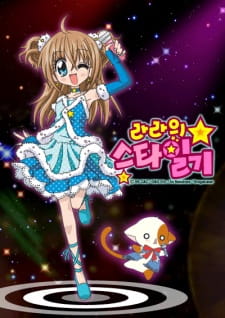
TV, 2006,
153 eps
Me:-
Author:10
Introduction:
People look up to idols and popularity at young age, the appeal of Kirarin Revolution is to serve as a setting to "fulfill" the dream.
People look up to idols and popularity at young age, the appeal of Kirarin Revolution is to serve as a setting to "fulfill" the dream.

TV, 2006,
26 eps
Me:-
Author:9
Introduction:
Reverse harem series are usually relatively popular but, not many have been as popular as Ouran.
Reverse harem series are usually relatively popular but, not many have been as popular as Ouran.

TV, 2008,
13 eps
Me:-
Author:9
An epic atmospheric "saga" detailing the softness of emotions and "solitude" of the main character in an interesting manner.
The series presents itself as an exploration of emotions. This exploration is presented through these supernatural elements present in the series, who essentially only are "in relation" with the main character. the relationships between the supernatural aspects and the "regular" aspects can be seen as a metaphor for the "solitude" and emotion on the main character.
The supernatural elements also provide commentary relating to the philosophy of the main character and his emotion.
The series presents itself as an exploration of emotions. This exploration is presented through these supernatural elements present in the series, who essentially only are "in relation" with the main character. the relationships between the supernatural aspects and the "regular" aspects can be seen as a metaphor for the "solitude" and emotion on the main character.
The supernatural elements also provide commentary relating to the philosophy of the main character and his emotion.

TV, 2008,
25 eps
Me:-
Author:10
Introduction:
Kind of a modern approach to the "classic" "Glass no Kamen" with more focus on the relationship and the struggle relating to that than the struggle and rivalry itself that is more of a focus in "Glass no Kamen"
Kind of a modern approach to the "classic" "Glass no Kamen" with more focus on the relationship and the struggle relating to that than the struggle and rivalry itself that is more of a focus in "Glass no Kamen"
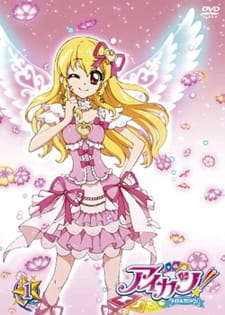
TV, 2012,
178 eps
Me:-
Author:10
Introduction:
The arcade games took everyone by storm and the series wasn't any less successful, "Aikatsu" and "Pretty Series" are currently "dominating" the "girls" market with "Precure"
Review (Aikatsu):
The original series focuses on a dream to become an idol, I'd say that the highlight of the series is the "musical performance" combined with the emotion that arises from the relationships and characters present in the series.
The visual representation of the "musical performances" in the series I'd say "builds" the relationships that are established "outside" of the performances and thus, you could say serves as a culmination point for each of the important progressions during the series.
I think this kind of approach to the character development is relatively interesting to witness, and I'd say it provides a rewarding experience when it comes to the experience as a whole.
Review (Aikatsu Stars):
In this series the initial "performance" aspect that I'd say was the factor that carried the original series with the linked "culmination" was modified to include the "creative" aspect which I'd say was not a bad inclusion in theory but in practice the balace between the two aspects was affected by this and I'd say that the "culmination" was not as impactful as a result.
Review (Aikatsu Friends):
The focus of this series lies in the "combined" experience and "culmination" when it comes to the "performance" aspect of the series, I felt that one of the strenghts of the original series was the "individual" combined with another "individual". But like before the "culmination" was left short I'd say when compared to the original series.
Review (Aikatsu Planet):
A new element is brought to the mix with the inclusion of live action footage and performance, however I'd say that this moreso created "a division" between these "performances" and it was harder to be able to understand the experience as a "whole" due to this "division".
The arcade games took everyone by storm and the series wasn't any less successful, "Aikatsu" and "Pretty Series" are currently "dominating" the "girls" market with "Precure"
Review (Aikatsu):
The original series focuses on a dream to become an idol, I'd say that the highlight of the series is the "musical performance" combined with the emotion that arises from the relationships and characters present in the series.
The visual representation of the "musical performances" in the series I'd say "builds" the relationships that are established "outside" of the performances and thus, you could say serves as a culmination point for each of the important progressions during the series.
I think this kind of approach to the character development is relatively interesting to witness, and I'd say it provides a rewarding experience when it comes to the experience as a whole.
Review (Aikatsu Stars):
In this series the initial "performance" aspect that I'd say was the factor that carried the original series with the linked "culmination" was modified to include the "creative" aspect which I'd say was not a bad inclusion in theory but in practice the balace between the two aspects was affected by this and I'd say that the "culmination" was not as impactful as a result.
Review (Aikatsu Friends):
The focus of this series lies in the "combined" experience and "culmination" when it comes to the "performance" aspect of the series, I felt that one of the strenghts of the original series was the "individual" combined with another "individual". But like before the "culmination" was left short I'd say when compared to the original series.
Review (Aikatsu Planet):
A new element is brought to the mix with the inclusion of live action footage and performance, however I'd say that this moreso created "a division" between these "performances" and it was harder to be able to understand the experience as a "whole" due to this "division".
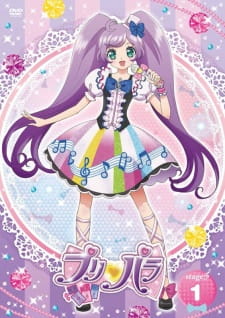
TV, 2014,
140 eps
Me:-
Author:10
Introduction:
The arcade games took everyone by storm and the series wasn't any less successful, "Aikatsu" and "Pretty Series" are currently "dominating" the "girls" market with "Precure"
Review:
"Pretty Series" utilizes similar approach to the aspect of development and the character "relations" that relates to expressing the culmination of the growth of the characters through a musical performance.
The difference between "Aikatsu" and "Pretty Series" lies more in their philosophy I'd say. The philosophyt embraced in the performance and the relationship dynamic in "Pretty Series" is focused more on the aspect of "emotional passion", pure "progress" and moving "forward".
While similar themes are present in "Aikatsu" I'd say that the emphasis and the linkage between the themes are structured differently.
Review (Pretty Rhythm):
Pretty Rhythm (3 seasons) is the initial series that established the "motifs" and the thematical structure of the "performance" while the series itself didnt rely on these factors as much and instead established itself more of a character focused drama than a periodical musical spectacle where the emotionsl progress culminates like the successor series.
Review (Pripara):
Pripara probably the most successful of the "Pretty Series" so far established relatively early that the philosophy of the series was built on a different foundation than what it used to be in "Pretty Rhythm". The series I'd say relies heavily on character interaction based "growth" and "development that "culminates" in the form of an emotional "release" also known as "the performance"
I personally found this structure to be interesting way to explore the character dynamics and "the development"
Review (Kiratto Prichan):
The approach is relatively similar to "Pripara" but the culmination isn't handled in a same way as the overall "Performance" aspect of the series relies more to its "linkage" to the "established" platform that is presented as a vehicle early on in the series.
However I wouldn't say that the "vehicle" takes away anything as far as the overall experience goes.
Review (Waccha Primagi):
In this sseries the "vehicle" is "magic" and the themes revolve around technology, magic and the relationship between them and the characters when it comes to the "performance".
Review (Himitsu no AiPri):
The arcade games took everyone by storm and the series wasn't any less successful, "Aikatsu" and "Pretty Series" are currently "dominating" the "girls" market with "Precure"
Review:
"Pretty Series" utilizes similar approach to the aspect of development and the character "relations" that relates to expressing the culmination of the growth of the characters through a musical performance.
The difference between "Aikatsu" and "Pretty Series" lies more in their philosophy I'd say. The philosophyt embraced in the performance and the relationship dynamic in "Pretty Series" is focused more on the aspect of "emotional passion", pure "progress" and moving "forward".
While similar themes are present in "Aikatsu" I'd say that the emphasis and the linkage between the themes are structured differently.
Review (Pretty Rhythm):
Pretty Rhythm (3 seasons) is the initial series that established the "motifs" and the thematical structure of the "performance" while the series itself didnt rely on these factors as much and instead established itself more of a character focused drama than a periodical musical spectacle where the emotionsl progress culminates like the successor series.
Review (Pripara):
Pripara probably the most successful of the "Pretty Series" so far established relatively early that the philosophy of the series was built on a different foundation than what it used to be in "Pretty Rhythm". The series I'd say relies heavily on character interaction based "growth" and "development that "culminates" in the form of an emotional "release" also known as "the performance"
I personally found this structure to be interesting way to explore the character dynamics and "the development"
Review (Kiratto Prichan):
The approach is relatively similar to "Pripara" but the culmination isn't handled in a same way as the overall "Performance" aspect of the series relies more to its "linkage" to the "established" platform that is presented as a vehicle early on in the series.
However I wouldn't say that the "vehicle" takes away anything as far as the overall experience goes.
Review (Waccha Primagi):
In this sseries the "vehicle" is "magic" and the themes revolve around technology, magic and the relationship between them and the characters when it comes to the "performance".
Review (Himitsu no AiPri):

